The National Historical Museum of Greece (Εθνικό Ιστορικό Μουσείο) is a historical museum in Athens. The oldest of its kind in Greece, the Museum houses the collection of the Historical and Ethnological Society of Greece (founded 1882), and is based in a lovely neoclassical building that formerly housed the Greek Parliament from 1875 to 1935.
Befitting its location, the Museum’s exhibits largely revolve around themes of Greek nationhood, with particular focus on the Greek War of Independence and the subsequent establishment of the independent Greek state. While not as “glamorous” as the Ancient Greek sites, the Museum provides visitors to Athens with an introduction to the history of Greek nation building, as well as some basic context crucial for anyone interested in Greek political history.
Where is the National Historical Museum?
The National Historical Museum is located on Kolokotroni Square (Πλατεία Κολοκοτρώνη), bounded on the north by Stadiou Street (Οδός Σταδíου), and by Kolokotroni Street (Οδός Κολοκοτρώνη) on the south side. The Square is named after Theodoros Kolokotronis, who was one of the eminent leaders of the Greek War of Independence. An equestrian statue of the man himself stands on a pedestal prominently on the Square, and is a useful landmark for locating the Museum.
The Museum is a 10 minutes’ walk northwest from Syntagma Square, and the compact size of the Museum means you really only need around an hour to complete the exhibits.
Google Maps link: https://goo.gl/maps/VkFnWWgnygcpgiAa6
The Old Parliament House | Μέγαρο της Παλαιάς Βουλής
The Museum is housed in the old building of the Greek Parliament. This neoclassical building housed the Greek Parliament (officially the Hellenic Parliament / Βουλή των Ελλήνων) from 1875 to 1935 during the turbulent early years of Greek democracy, and witnessed key points in the state’s history. It really is fitting that a Museum dedicated to the development of Greek nationhood is housed here.
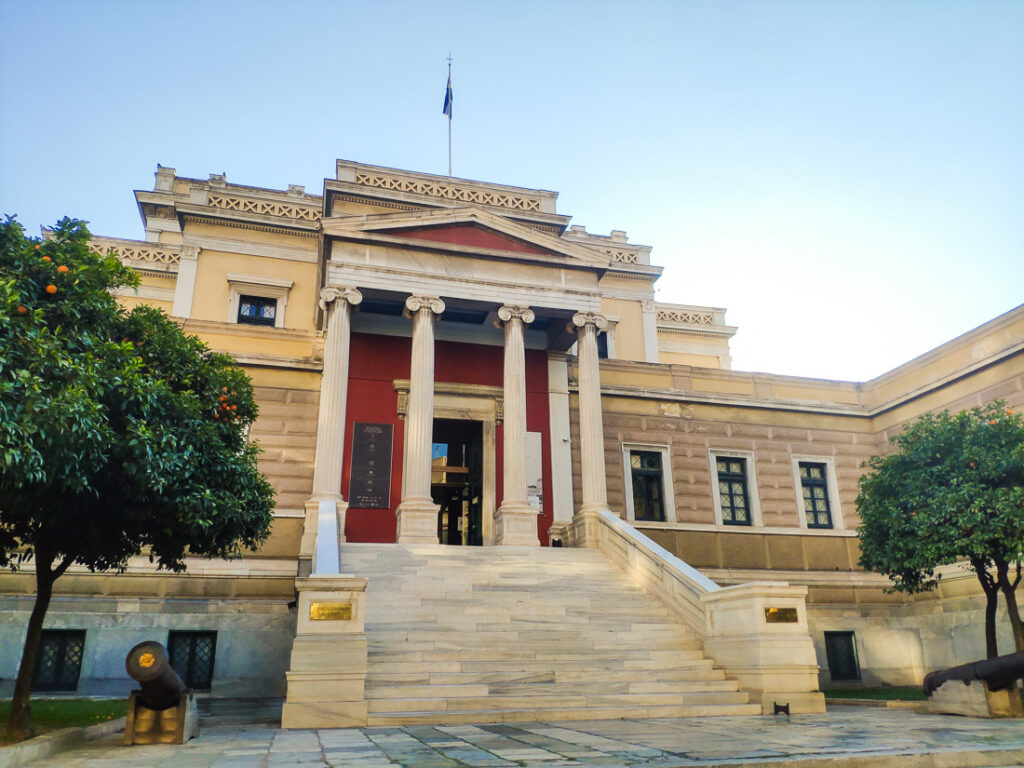
Naturally, as the museum is grafted onto the existing layout of the building, visitors are able to enter and have a close look at the former parliamentary chamber. For fans of constitutional law, this isn’t something to be missed.
My visit to the National Historical Museum
I had the chance to visit the Museum during my winter 2022 visit to Athens. I’m always a big fan of museums, and this being the former Parliament House gave me extra reason to visit.
The Museum’s permanent exhibits are laid out in the building’s compact space. The flow of the visit starts by turning left at the ticket counter where visitors are brought through a series of rooms, each covering a stage of the Greek War of Independence. There are a number of historical artifacts from the war on display, including weapons, suits of armor from the war, and a nice variety of revolutionary flags to please the vexillogists.

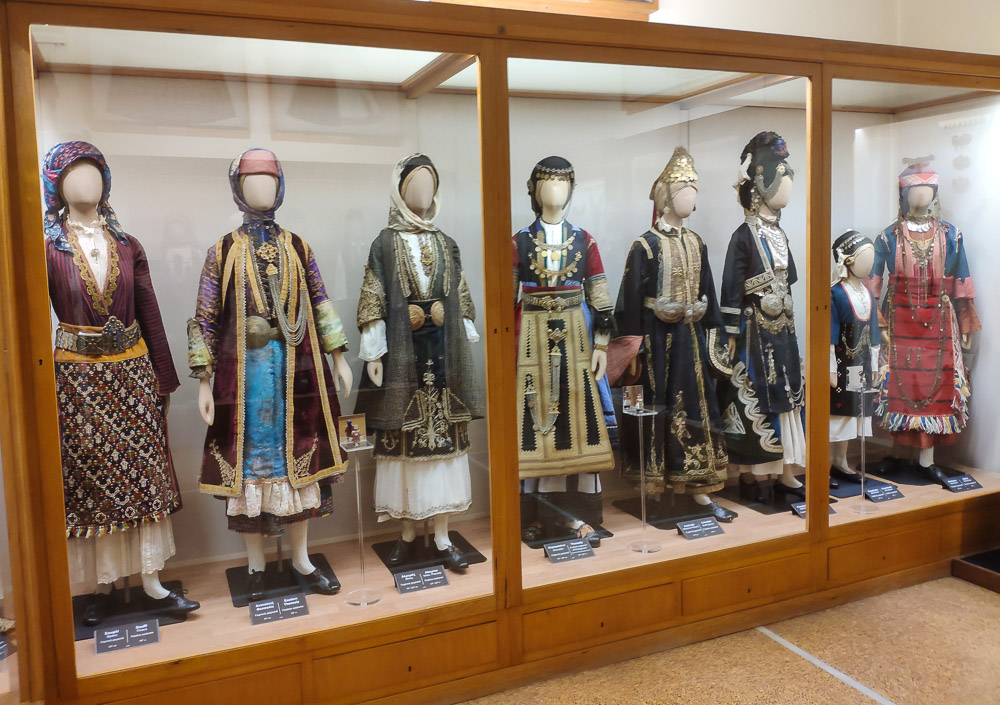
You can track the historical progression of the rooms by following the portraits on display – starting with portraits of prominent Greeks of the Ottoman Era, moving on to portraits of prominent Greek revolutionary leaders, and finally to portraits of the Kings of the young Kingdom of Greece. While you’re at it, don’t miss the portrait of Ioannis Kapodistrias and his distinctive gaze – Kapodistrias played a very crucial role in ensuring a functional Greek state emerged from the war.


The exhibition on the war continues upstairs in what used to be the public gallery of the old parliamentary chamber. These were better laid out and explored more aspects of the war and the subsequent nation building process.
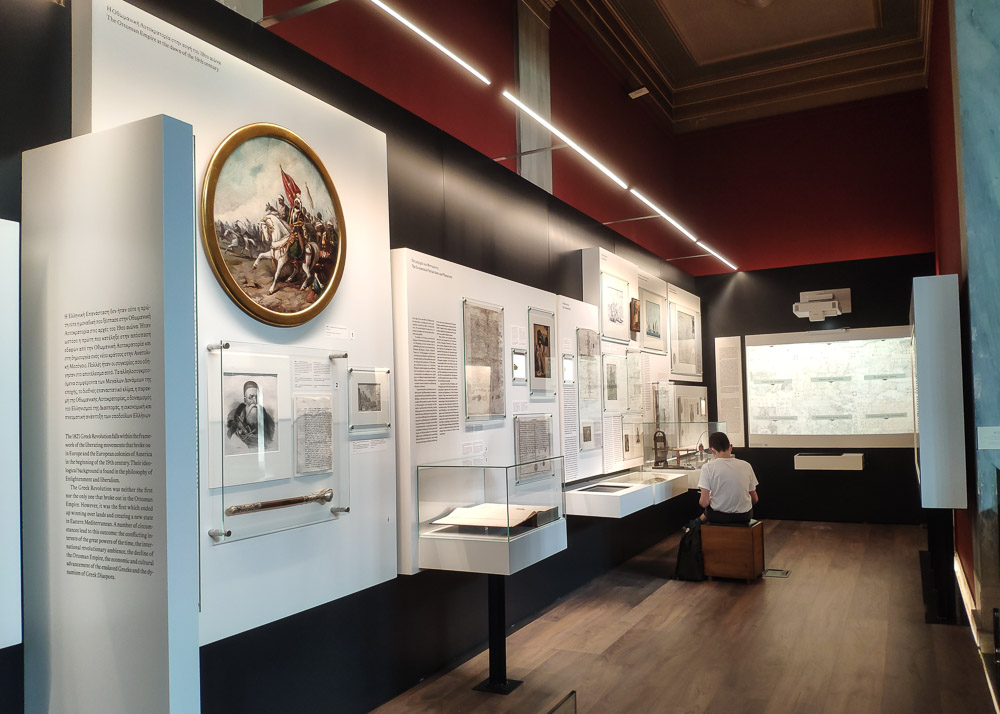
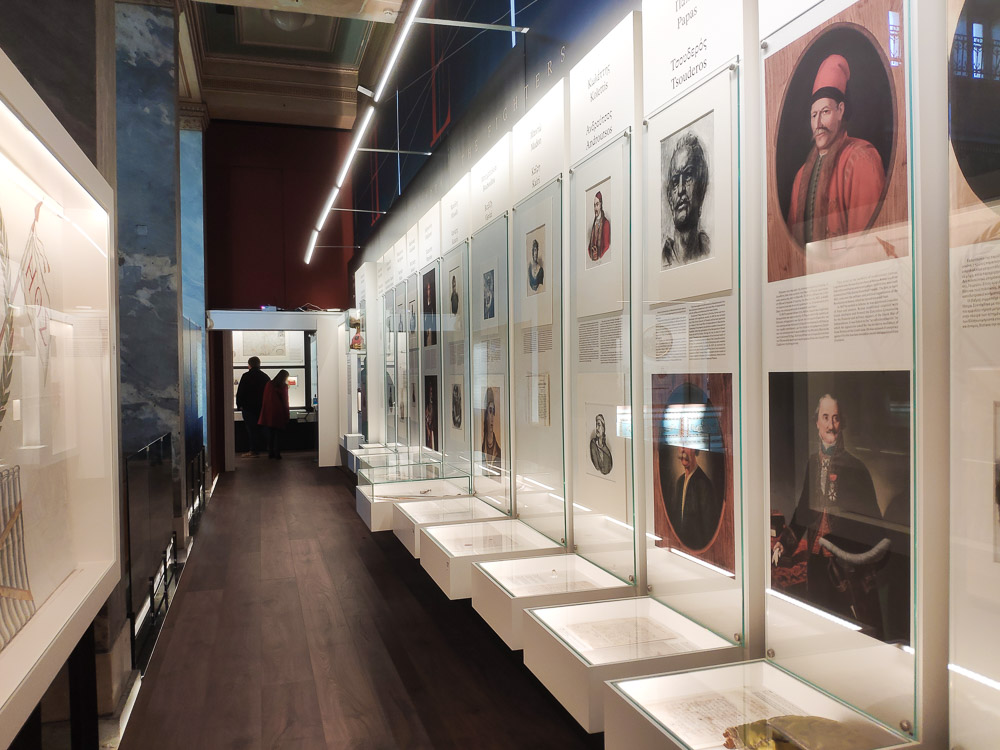
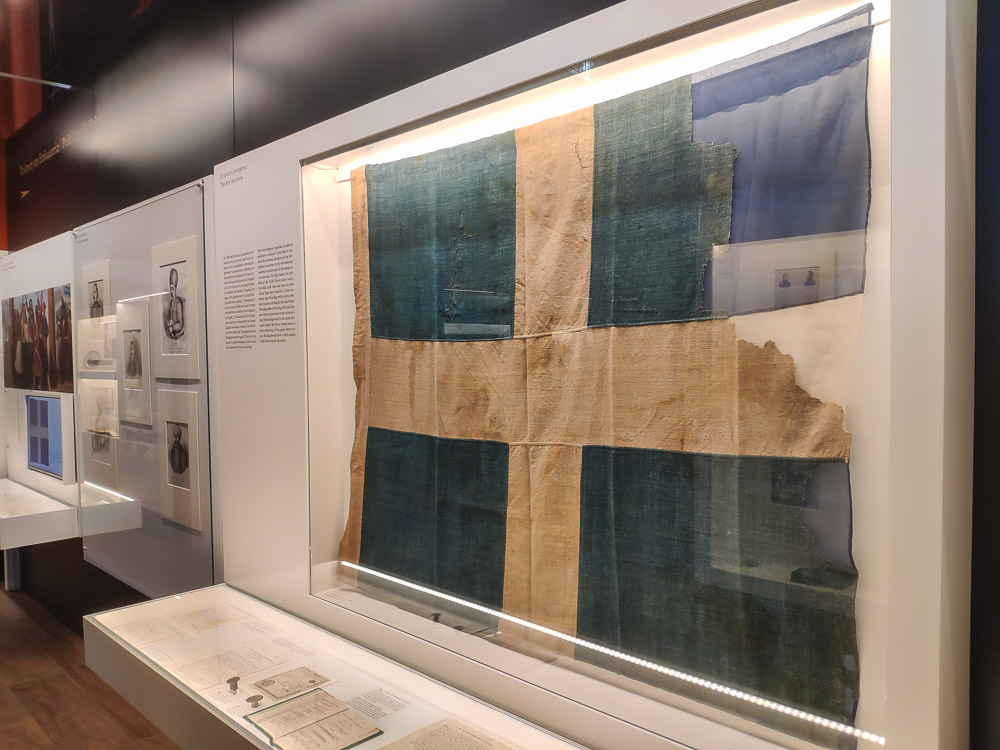
I loved the collection of portraits and artefacts on display, and got the impression that the Museum’s collections are actually much more extensive than shown. But I also thought the way the exhibits on the ground floor were laid out felt a bit rushed and too summarised. Perhaps the Museum needs a bigger building?
Temporary Exhibition “From Greater…to contemporary Greece”
At the time of my visit, the Museum was (and still is) hosting a temporary exhibition titled “From Greater…to contemporary Greece (Part 1)”. This exhibition covers the Greco-Turkish War of 1919-1922 in the aftermath of World War 1, and gives an overview of the Greek military advance and disaster in Turkish Anatolia.
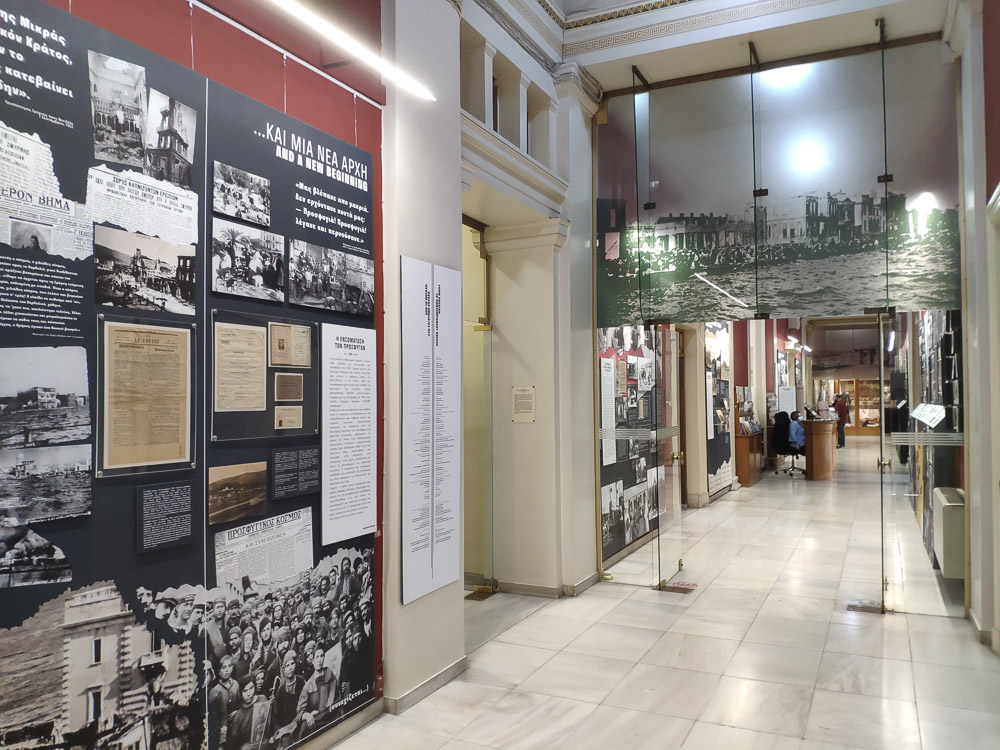
The exhibits are located in the short corridors to the left and right of the ticket counter. The displays are arranged in a chronological order from the right to the left side, but it then breaks off to continue in the old parliamentary chamber in the middle.



This temporary exhibition covers a topic less well known beyond Europe, but I felt it could have gone into more detail about the irredentist “Megali Idea” that prompted Greece to stake a claim to parts of Turkish Anatolia in the first place. Instead, the exhibits simply jump right into the flurry of events and decisions that started the war, and misses the crucial context needed by non-Greek citizens to understand why the war happened. As it was, I happened to be familiar with the Megali Idea simply because I had gone down the Wikipedia rabbit hole in my spare time – but not everyone does this.
The exhibit covers the horrific casualties suffered by the Greek Army in Anatolia, but it glosses over the issue of war crimes committed by the armies involved – there is only a brief reference to atrocities committed by both the Greek Army of Asia Minor and the Turkish Nationalist Army of the Grand National Assembly. I can appreciate that physical space was severely lacking, but for an exhibit covering a controversial yet critical period of Greece’s modern history, it could certainly do better.
Should you visit the National History Museum?
Yes, I do think that the National History Museum is a must visit, especially for visitors who want an introduction to the Greek nation building process. The Museum isn’t the most extensive but it nevertheless is educational, bearing in mind that most visitors’ impression of Greece are limited to Ancient Greek history.
If you’re based around the Syntagma Square area, why not spend an hour at the Museum to complete your knowledge of the country you’re visiting?
Visitor Information
Entrance fees
| Ticket | Price (€) |
|---|---|
| General Admission (18 years old & above) | 5.00 |
| Reduced Admission (Students, and 65 years old & above) | 3.00 |
| Free Admission (Below 18 years) | 0.00 |
| Every Sunday | 0.00 |
| Every March 25, May 18, October 28 | 0.00 |
Opening Hours
| Months | Days | Time |
|---|---|---|
| September > June | Tuesday to Friday | 9:00 am to 4:00 pm |
| Saturday & Sunday | 10:00 am to 4:00 pm | |
| July > August | Tuesday to Sunday | 10:00 am to 4:00 pm |
The Museum is closed on every December 25 & 26, January 6, and on Easter Sunday.
For more information, please visit the Museum's visitor information page here.
External Links
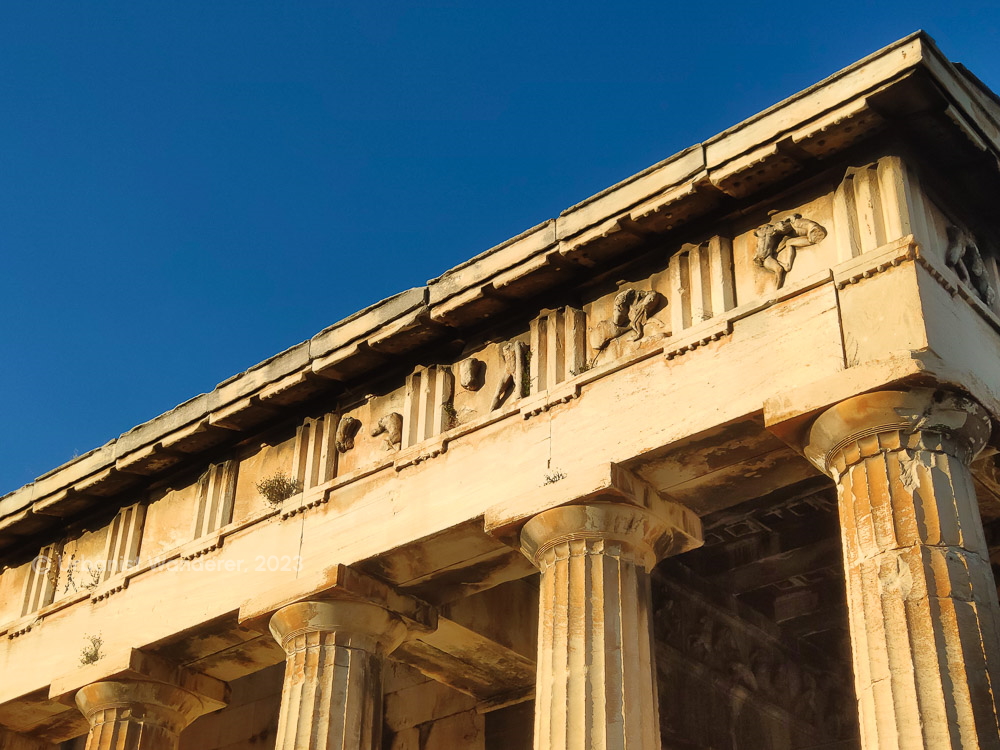

Leave a Reply